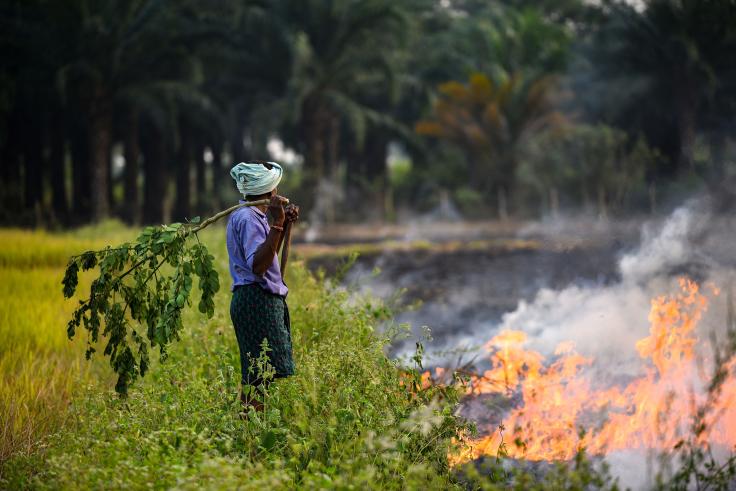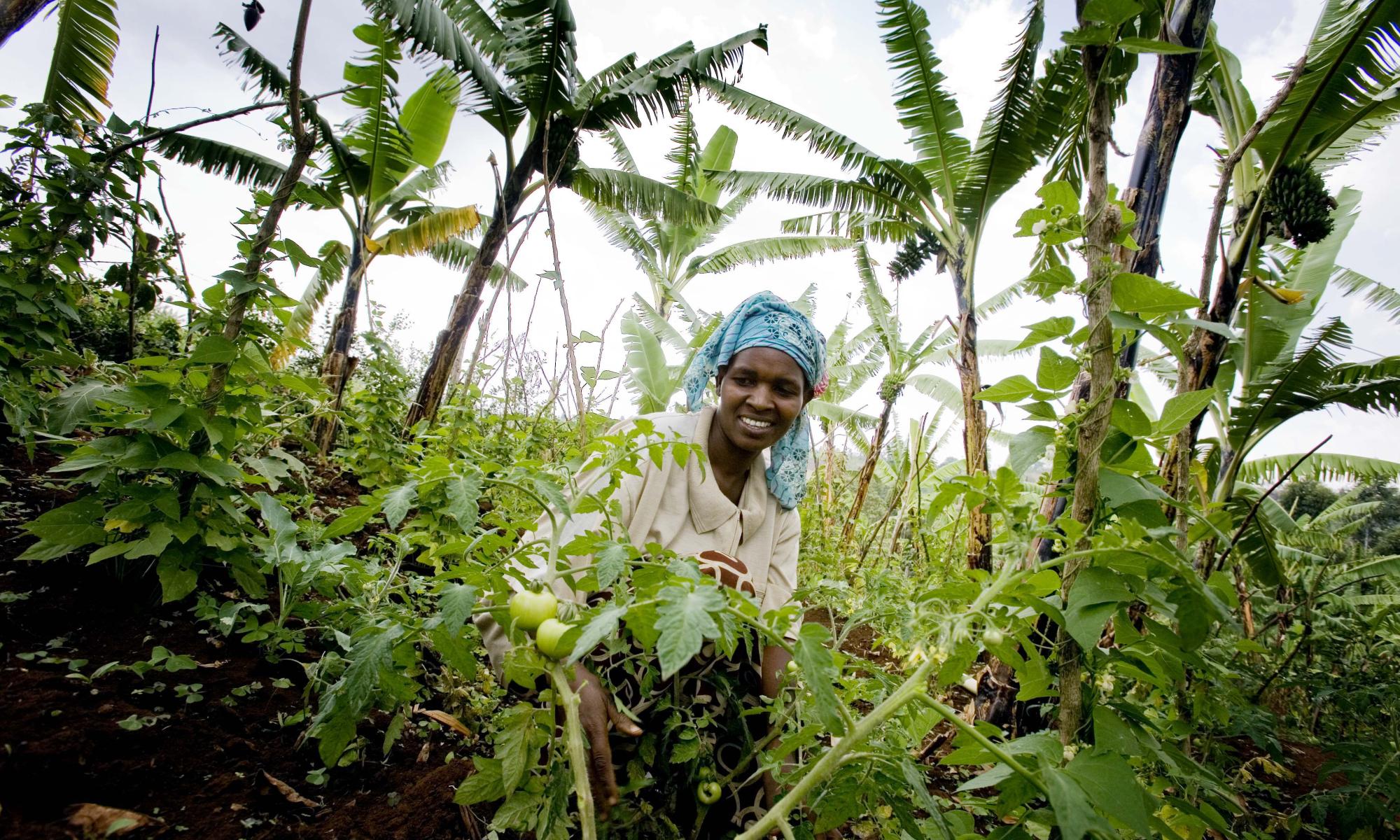Compensating landowners with cash payments for conserving forests, planting trees, and harvesting crops without burning can be a highly cost-effective way to reduce air pollution and deforestation.
Fund and scale conditional cash transfers for farmers—also known as payments for ecosystem services, or PES—as a core climate and development tool. Bilateral donors, climate funds, and philanthropies should finance country‑led PES programs that target high‑risk lands and use evidence to inform program design.
Target programs to those most likely to comply. Use data on poverty, historic losses, and geospatial risk to prioritize participants most likely to clear or burn forests. A study in Uganda in a high-deforestation area found that PES reduced tree loss by 54 percent.
Upfront payments can help improve compliance. Paying farmers partially upfront, instead of providing the full amount at the end, was shown to increase trust in the program and further reduce harmful practices like crop burning.
Demand for evidence is high—and early donor support is critical to close design loopholes. Funding rigorous evaluations, monitoring, and cost‑effectiveness tests can provide a much-needed policy playbook for governments to design, improve, and scale their own PES programs.
PES pays people to protect forests—and it works. For the 1.6 billion people who depend on forests for their livelihoods, charging fines is an inadequate tool to encourage people to shift away from practices like harvesting timber, crop burning, and using fuelwood. PES flips the script by paying landholders cash in exchange for protecting nature in a number of ways, including conserving forests on their property, planting trees, and using machines to harvest crops without burning. Rigorous evaluations show PES can materially reduce pollution from crop burning and tree loss at a fraction of the price of popular climate policies in wealthy countries, such as electric vehicle subsidies.
Evidence-informed PES programs deliver a large climate bang‑for‑buck. Across several randomized evaluations, cost per ton of CO₂ averted is often just a few dollars because preventing deforestation or burning is extremely cheap relative to the damages avoided. Estimates for a program evaluated in Uganda indicate that on average, every US$2.60 spent on PES–less than a cup of coffee–avoided 1 ton of CO₂ from being released into the atmosphere.
Design details can make or break a program’s success. Three lessons are clear from the research: (1) Target high‑risk landholders to maximize the effect of the payments in slowing down potential deforestation or crop burning; (2) Verify compliance with satellite footage to ensure payments reward real conservation and damage is not displaced to neighboring areas; and (3) Fix contract incentives—from requiring participants to enroll all of their land, to building in upfront payments that overcome distrust and cash constraints.
Scale and keep testing. Long‑run sustainability depends on continued budget availability to avoid program disruptions, and on effective targeting of farmers living on land at high risk of deforestation. As climate budgets tighten, funders should prioritize designs that boost the impact of each dollar spent, along with transparent monitoring, reporting, and continuous evaluation to sustain environmental gains.
Cost and design considerations
PES often achieves large emissions cuts at very low cost—making it ideal for scarce climate dollars. In Uganda, randomized evidence shows the net climate benefits of avoided emissions were more than double program costs; outside comparisons suggest PES can beat the cost‑effectiveness of many energy‑sector subsidies by wide margins. In Mexico, contracts that require farmers to enroll all of their land quadrupled cost‑effectiveness relative to the existing government PES design, by ensuring payments result in additional conservation rather than going towards land that was not going to be deforested anyway.
Small tweaks to programs can have an outsize impact on each dollar spent. Implementers should: (i) Target parcels and participants at high risk of clearing using historic loss, access, and poverty data. Where budgets are tight, use mechanisms like auctions to select the most motivated participants—this cut costs by about 30 percent in Malawi. (ii) Structure contracts to require farmers to enroll their entire property where feasible, and to give upfront payments to increase trust and give landholders the resources to change behavior early in the program; and (iii) Use satellite data to verify that clearing is not increasing in neighboring areas.
PES often achieves large emissions cuts at very low cost—making it ideal for scarce climate dollars.
Implementing partners and the role of LMIC government
Implementers bring deep local knowledge, technical expertise, and a commitment to evaluation and learning as they bring these programs to life. These include the following (listed in alphabetical order); this list is not exhaustive.
- Chimpanzee Sanctuary & Wildlife Conservation Trust (CSWCT)
- Comisión Nacional Forestal (CONAFOR)
- Innovations for Poverty Action (IPA Mexico)
- National Environment Management Authority (NEMA)
- The Nature Conservancy
- World Agroforestry (ICRAF) / Ecobank Malawi

Government leadership is central from pilot to scale. Uganda’s NEMA worked with CSWCT, UNEP, and researchers to test whether PES could conserve privately held forests in the Albertine Rift—a model of public–NGO–research collaboration. Mexico’s CONAFOR has run a national PES since 2003 and is iterating design (e.g., testing full‑enrollment contracts) to raise additionality under tight budgets.
The role of foreign assistance and philanthropy
Aid and philanthropy catalyze innovation and evidence. Uganda’s randomized trial was enabled by international partners—GEF (through UNEP), 3ie, and other research funders—working with NEMA, CSWCT, and IPA to deliver a high‑integrity test and satellite‑based measurement. The King Climate Action Initiative (K-CAI) at J-PAL funded the scale up of those findings in a pilot study in Mexico.
Small grants unlocked big design improvements. In India, funding from J-PAL and CEGA’s joint Agricultural Technology Adoption Initiative, J‑PAL South Asia’s Cash Transfers for Child Health Initiative, private philanthropy, and university centers supported contract innovation (partial upfront payments) that substantially improved compliance and generated credible estimates of health and climate benefits—evidence LMIC governments and donors can now scale.
Photos:
(1) Credit: Kate Holt/AusAID, CC BY 2.0, via Wikimedia Commons
(2) Credit: Abdul Munaff, Shutterstock.com
